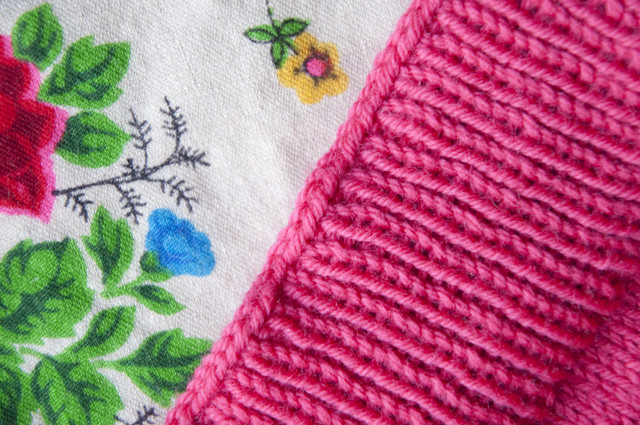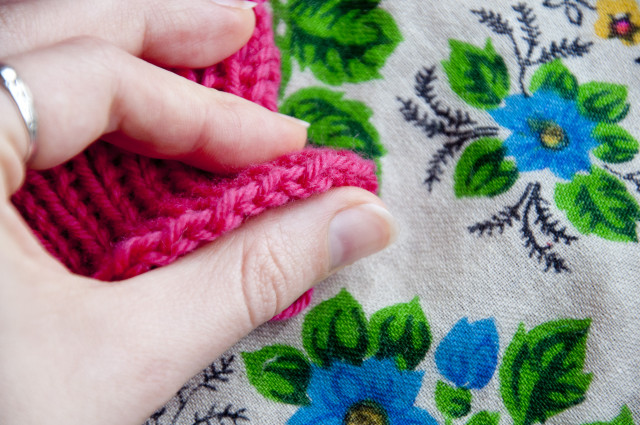I’m really close to finishing my Chuck. I just need to redo a bind-off and weave in the ends. Since I accidentally did the bind-off wrong on a sleeve, I thought it’d be a good chance to show you the difference between binding off knit-wise and binding off in pattern when you’re working with 1×1 rib.

Chuck doesn’t tell you which bind-off method to use and leaves the decision up to you, but for the sample I chose to use a knit-wise chain bind-off. I knit every stitch and passed the previous stitch over until they were all bound off. I really like the way that looks with this design, so I decided to do the same for my Selfish Sweater KAL project. Binding off knit-wise here creates this nice line of bound-off stitches that curls to the front. This is the “chain” that the name refers to. Although it’s not the most elastic choice, it makes for a pretty edge.

Here we have a chain bind-off in pattern. I continued to [k1, p1] and passed the previous stitch over until they were all bound off. I use this bind-off more than anything else because it stays elastic and it’s really subtle looking. It also doesn’t require me to break out a yarn needle!

The “chain” of bound-off stitches sits flat against the edge of my knitting when it’s done in pattern and is slightly hidden. Both versions of the chain bind-off will get the job done, and it’s just a question of choosing the one I like best for a project and being consistent about it!
Leave a Reply